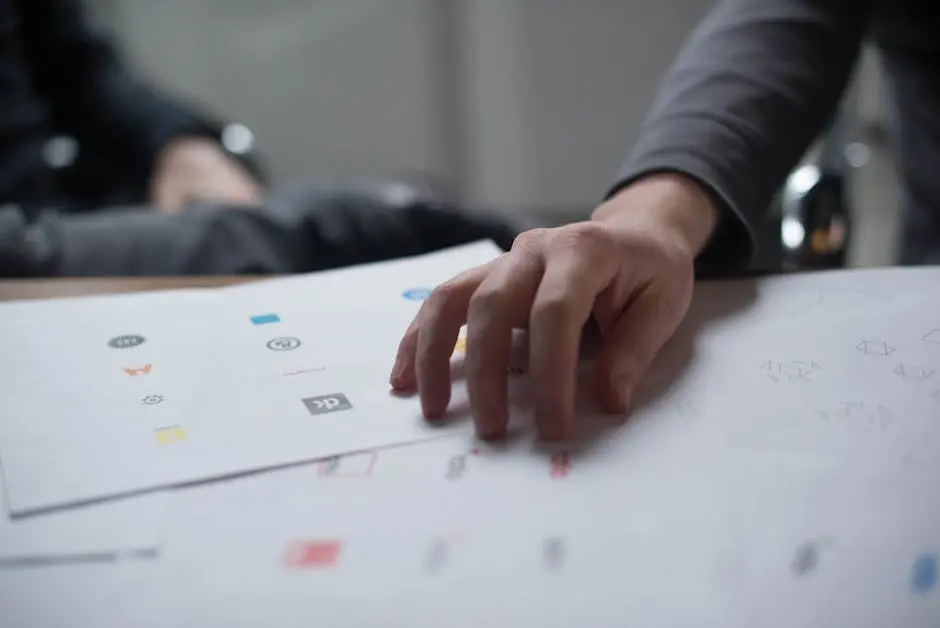How Logo Design Shapes Brand Identity and Visibility
In today’s competitive marketplace, a strong brand identity is essential. One of the most crucial elements of this identity is your logo. This blog will delve into the importance of logo design and how it plays a pivotal role in shaping brand visibility and perception. We’ll explore how a well-crafted logo acts as more than just a visual symbol; it becomes a representation of your brand’s values and establishes a memorable connection with your audience.
The Essence of Logo Design
Logo design is not merely about aesthetics; it’s about conveying the essence of your brand. A strong logo encapsulates what your brand stands for and serves as a visual shorthand for your identity.
Consider the most recognizable logos around the globe. Each one tells a story, a unique narrative that communicates the brand’s mission and values to its audience. For example, the Nike swoosh isn’t just a graphic; it’s a symbol of athleticism and motivation. This connection between logo and brand identity is critical when developing your visual elements.
Moreover, a logo should align with your target audience’s expectations. It’s not enough to create something that looks appealing; it must resonate deeply with the people you wish to attract. Therefore, understanding your brand’s personality and voice is fundamental before embarking on the logo design journey.
How Logos Create Emotional Connections
Logos have the power to evoke emotions and forge connections with consumers. A well-designed logo can inspire trust, familiarity, and loyalty, crucial traits for building a successful brand.
When you see the golden arches of McDonald’s, what feelings does it evoke? For many, it sparks memories of childhood, fast food, and family gatherings. This emotional link creates a strong bond between the consumer and the brand, which is precisely the power of effective logo design. It doesn’t just communicate a business; it builds a relationship.
Brands that leverage this emotional connection in their logos often see increased customer engagement and retention. Emotionally charged logos invite connection and create an environment where customers feel understood and valued.
Ultimately, emotional resonance plays a key role in a consumer’s purchasing decisions. So, the next time you’re contemplating a logo redesign, remember: the goal isn’t just to be seen but to be felt.
Key Elements of Effective Logo Design
Not all logos are created equal. Effective logo design incorporates specific elements such as color theory, typography, and simplicity to ensure maximum impact and recognition across different platforms.
Color, for instance, dramatically influences perception. Different colors evoke different emotions; for example, blue often communicates trust, while red can elicit excitement. A deep understanding of color psychology allows brands to carefully choose hues that align with their core message.
Typography is equally vital in expressing brand personality. A sleek, modern typeface might suggest innovation, whereas a whimsical font might evoke a sense of fun. The choice of font can dramatically alter how a brand is perceived.
Additionally, simplicity in logo design is often overlooked but crucial for quick recognition. Think of logos that have stood the test of time—they are frequently straightforward yet impactful, allowing them to be easily remembered and reproduced across various mediums.
The Role of Consistency in Branding
A consistent logo across various branding materials is vital for building brand recognition. We’ll discuss how maintaining consistency can enhance visibility and what that means for your brand’s audience.
Consistency fosters trust. When customers encounter your logo repeatedly on different platforms—be it social media, your website, or packaging—they begin to associate familiarity and reliability with your brand. This recognition is paramount in a marketplace flooded with choices.
Moreover, consistent branding helps to reinforce your messaging. Each time a consumer sees your logo, they are reminded of what your brand stands for, reinforcing their connection to your mission and values. This ongoing exposure can turn casual customers into loyal advocates.
In a world where everything is vying for attention, having a clear and repetitive brand identity is crucial. Aim for uniformity and clarity to make your logo an unforgettable part of your audience’s life.
Case Studies of Iconic Logos
Looking at successful brands like Apple and Nike, we can explore how their logos contributed to their identity and visibility in the market. What can we learn from these iconic examples?
Apple’s logo, a simple apple with a bite taken out of it, symbolizes knowledge and curiosity. It’s clean and memorable, complementing the brand’s ethos of innovation and simplicity. People associate this logo with quality and creativity, which are integral to Apple’s identity.
Nike’s swoosh, a representation of movement and speed, captures the essence of athletic achievement. It’s a powerful example of how a logo can convey a message and inspire action, motivating customers not just to wear the brand but to embody its spirit.
Through these examples, it’s clear that great logo design is about far more than just looking good; it’s about creating an identity that resonates with consumers and stands the test of time. What lessons can we apply to our own logo design process?
Final Thoughts on the Power of Logo Design
In conclusion, logo design is a fundamental aspect of brand identity that cannot be overlooked. A thoughtfully designed logo not only enhances visibility but also communicates your brand’s essence and values to your audience. By investing the time and resources into creating a compelling logo, you ensure that your brand stands out in a crowded marketplace. Remember, your logo is often the first impression customers have of your brand, so make it count!










